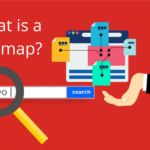Do you have customers from different countries? Do your customers speak different languages? If your answer is yes to either of those questions, then you should consider international SEO.
What is international SEO?
International SEO is the process of improving your search presence for people who are in different countries or speak different languages. You can target content to users worldwide using geo-targeting, hreflang tags, and other localization signals.
How international SEO works?
Google tries to match search results to the searcher’s language and location. When your website has content intended for users in a specific country or searching in a particular language, then you should inform Google and other search engines by adding some special instructions to your site.
If a significant portion of your website visitors come from a different country than where you operate, speak different languages, or both, it may be time to make some adjustments to your website to provide a better experience for all of your international visitors.
If you want to build an internationalized site, consider the following 3 major steps to achieve “international geotargeting.”
- Country Targeting – Use an international-friendly URL structure to specify your target country and/or region.
- Language Targeting – With the use of language tags, indicate which language your pages are targeting.
- Content Targeting – Create and maintain content in the language of your target audience(s).
International SEO best practices
URL formats for international sites
Webmasters can employ a few URL formats to target a specific country.
ccTLD — According to Google, ccTLDs are two-letter codes that inform users and search engines about the country, sovereign state, or dependent territory in which a website is registered.
example.uk
Subdomain — Internationalized content is hosted on a different “third-level domain,” which may or may not pass or receive link equity from the root domain.
uk.example.com
Subdirectory — Internationalized content is placed in a root domain’s subdirectory or subdomain.
example.com/uk
gTLD with language parameters — A URL parameter is added to a generic top-level domain (such as.com or .net) to target speakers of a specific language.
example.com/?lang=en-us
Different domain — Internationalized content is hosted on a separate root domain than the non-internationalized site.
exampleuksite.com
Hreflang tag or language meta tags
Using hreflang or language meta tags, show search engines which languages you’re set up to manage. The following example would inform Google that an Italian-language version of the content is available at the specified link.
hreflang tag example:
<link rel=”alternate” href=”http://example.com/it” hreflang=”it-it”/>
Personalize your content for the language and culture of your target audience
Ensure the information you’re providing is appropriate for your target audience(s). By using the local language, currency, timezone, and contact information like addresses and phone numbers, you’re giving solid signals to users and search engines that they’re in the right place. When creating your design and content, keep cultural variances in mind. Color, layout, and humor style are all viewed differently in different parts of the world.
Conclusion:
You can get started with international SEO by following the steps above to optimize your website for audiences who live in different countries or speak different languages.
Consider using a ccTLD if you want to target a particular country. However, if you’re only interested in language targeting, a ccTLD isn’t the ideal option because they’re designed to target a certain geographic area rather than the language spoken there. In these scenarios, you’ll probably want to use hreflang, subfolders, or subdomains instead of or in addition to a ccTLD.






